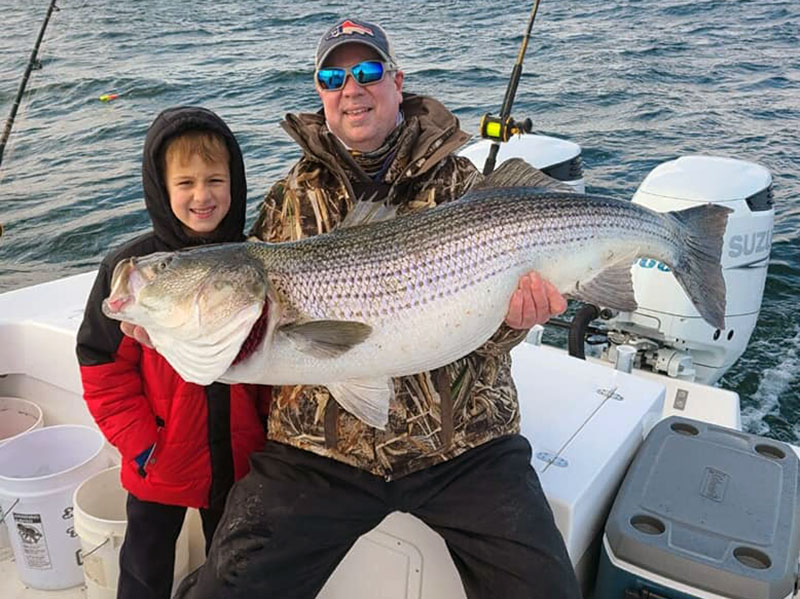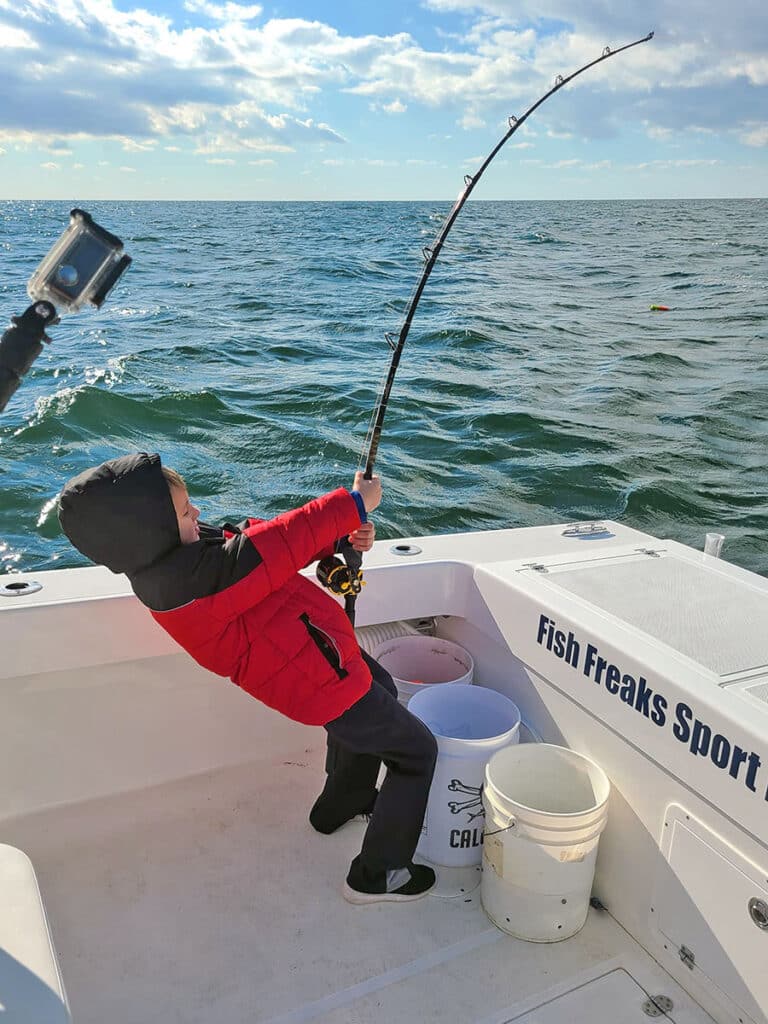
“Striped bass fishing can be really good in the cold,” says Capt. Kenny Louderback, of Cape Charles, Virginia. Louderback has been slow trolling live eels for trophy striped bass all winter along Virginia’s Eastern Shore. “Our average fish are between 44 and 52 inches,” he says.
Cold Water Chesapeake Bay Stripers
When fishing for striped bass in the colder months, check to see if the season is closed, although catch and release fishing is often allowed.
Louderback says anglers can expect striper fishing to catch fire when the water temperature drops.
“We were running all the way to the Banana Hole,” Louderback says, referring to a striper hotspot near the Maryland and Virginia border. That’s farther north than he normally fishes — it’s much more common for striped bass to amass closer to Cape Charles and the mouth of the bay in January and February.
Louderback believes warm water temperatures caused the late migration. “It took forever for the water to drop below 50 degrees,” he says. As the water drops into the upper 40s, the fish move south. It’s a trend Louderback has come to rely on. The good news that a late striper migration often extends the bite much further into the new year. “They can get really aggressive, too,” Louerback adds.
Read Next: Striped Bass Fishing in New England
Troll Live Eels for Striped Bass
To catch striped bass, Louderback slow trolls live eels over deep channels and shallow shoals in the lower Chesapeake Bay. He fishes up to 10 rods with some lines set deep and others fished closer to the surface. To space out his trolling lines, Louderback uses planer boards.
Louderback starts with a 7-foot medium-heavy boat rod matched to a 20-pound conventional reel. The reel is spooled with 30-pound monofilament ending in a snap swivel. Then, he ties an 8/0 inline circle hook to three feet of 50-pound fluorocarbon leader and adds a snap swivel to the free end. He clips a trolling sinker between the two snap swivels. For the shallow lines, he uses 2 ounces. The deeper lines he adds 6 to 8 ounces.
Louderback usually fishes at two knots, focusing on humps and drops. When he’s headed down-current, he drops his lines back 20 feet. And when he trolls into the current, he drops them back 30 feet. He likes to use a zig-zag trolling pattern.
“When the boat turns, the inside baits drop and I often get a bite,” he says.
Hooking, Fighting and Releasing Striped Bass

When one of his lines comes tight, Louderback lets the fish run until it steadily pulls drag. “That way I know the fish has the bait in its mouth,” he explains.
Louderback stresses good release protocols with trophy striped bass. “I can’t stand to see people take the fish out of the water for photos, then just throw it overboard,” he says. Instead, the captain suggests reviving the fish boatside until it swims on its own. “When I feel the fish biting down on my thumb, I know it’s ready to go,” he says.
On a recent half-day trip, Louderback got six bites and boated five big striped bass. He says he’s been averaging three to five bites per trip








